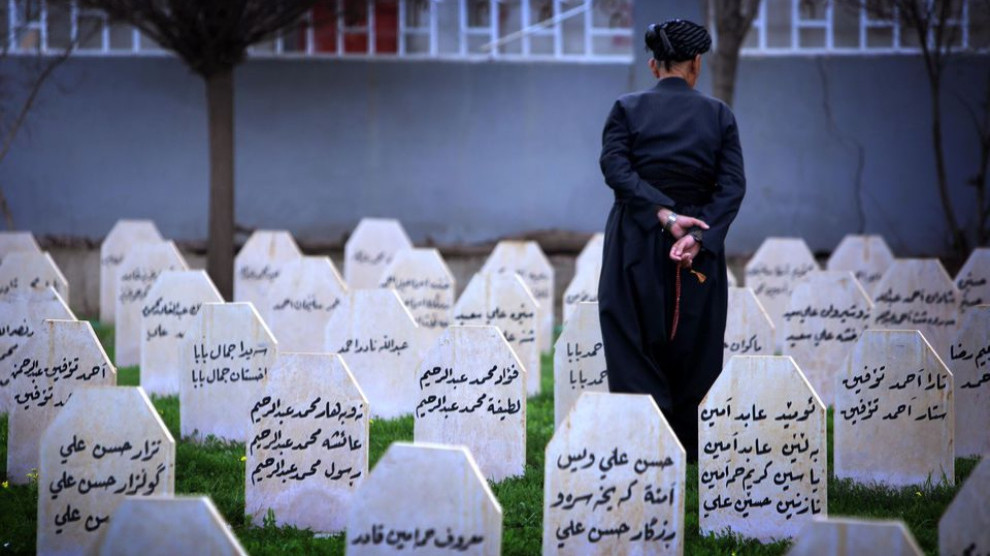A wound bleeding for 32 years: Halabja
On 16 March 1988, 32 years ago, 5,000 Kurds, mostly women and children, were killed when deadly gas was released on the northern Iraqi town of Halabja by Saddam Hussein's forces.
On 16 March 1988, 32 years ago, 5,000 Kurds, mostly women and children, were killed when deadly gas was released on the northern Iraqi town of Halabja by Saddam Hussein's forces.

On 16 March 1988, 32 years ago, 5,000 Kurds, mostly women and children, were killed when deadly gas was released on the northern Iraqi town of Halabja by Saddam Hussein's forces.
The attack left thousands disabled and forced thousands of others to migration.
A Belgian-Dutch team from Medecins Sans Frontieres (MSF), the first foreign medical mission to reach Halabja, confirmed the use of mustard gas and probably of cyanide.
By March 23, the first images are broadcast on Iranian television. Corpses scatter the streets with no obvious sign of injury, although witnesses say later some had blood around their noses.
An AFP special envoy, Michel Leclerq, describes the horror in a story filed on 1 April: “Not the slightest stir, not a cry, not a movement: Halabja ... seems frozen, immobilised in a deep sleep, while canons thunder in the distance.”
The "houses remain standing, the stores are full" said Leclerq, but "no soul lives here since Iraqi planes released their deadly poison".
It would be 20 years later when General Ali Hassan al-Majid, known as "Chemical Ali" for ordering poisonous gas attacks, is hanged in 2010.
A cousin of Saddam, al-Majid is found guilty of having ordered the attack on Halabja.
He gets four death sentences, including for Halabja, but insists he acted in the interests of Iraqi security and expresses no remorse.
In 2012, the Iraqi government hands the authorities in Halabja the rope used in his hanging.
Saddam Hussein himself is hanged in 2006, three years after the US-led invasion of Iraq.
A survivor told ANF: "Everything happened so fast. Thousands of people drew their last breath in ten minutes. Dead bodies were lying everywhere one looked. The rest left the city and took the migratory path. Those left to poverty and sickness were as many as the dead."